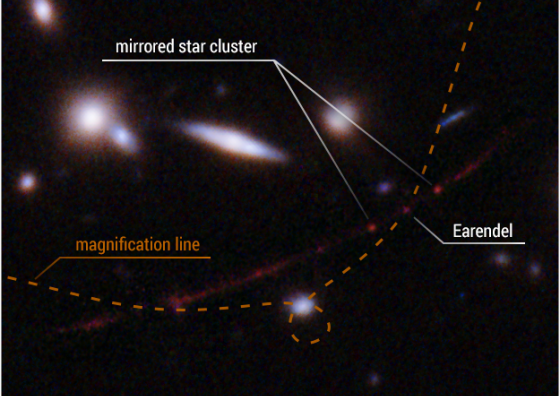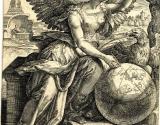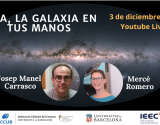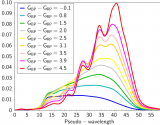ICCUB-IEEC’s researcher Josep Manel Carrasco participates in the Science Space of the radio programme “La República Santboiana” of ràdio Sant Boi last Wednesday, April 20. In the programme, the astronomer talks about the furthest and oldest star known to humankind: Earendel. Its light began its journey when the Universe was merely 900 million years old. Thanks to the gravitational-lensing effect created by a family of galaxies passing by, the light of the star has been amplified (as if going through a magnifying glass) and was able to reach us.
Dr Carrasco also explains that the origin of the name of the star comes from a 10th century poem and that it means “Morning Star” or “Rising Star” symbolising the fact that this is the first star after the birth of the Universe that we know of.
He also mentions the news of the new source of very high-energy gamma rays observed by the MAGIC telescopes, with the collaboration of members of the University of Barcelona.
The astronomer is a frequent collaborator of this radio programme and he has contributed numerously to it since he started the collaboration in 2015.
You can listen to the whole programme here.




